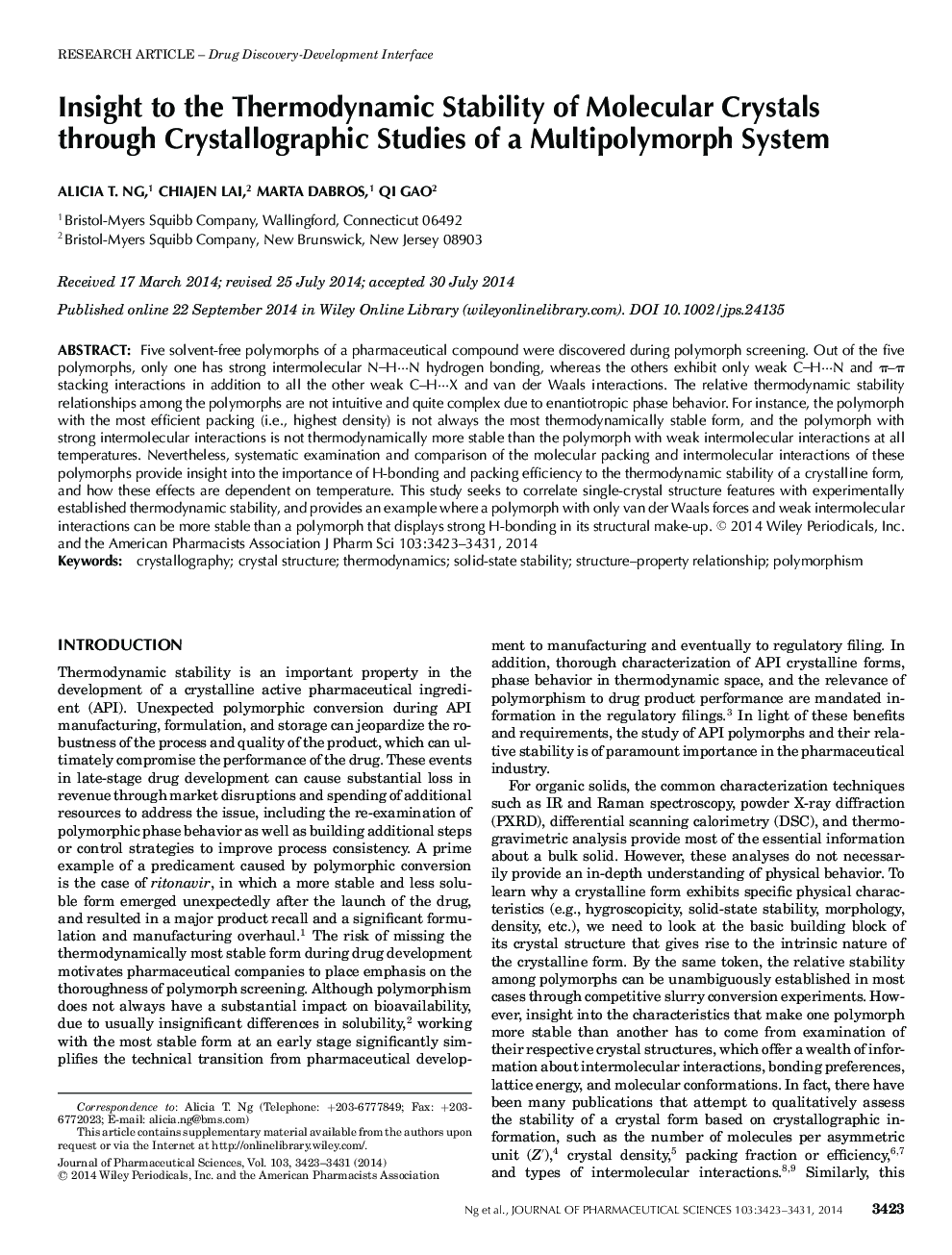| Article ID | Journal | Published Year | Pages | File Type |
|---|---|---|---|---|
| 10162248 | Journal of Pharmaceutical Sciences | 2014 | 9 Pages |
Abstract
Five solvent-free polymorphs of a pharmaceutical compound were discovered during polymorph screening. Out of the five polymorphs, only one has strong intermolecular N-H···N hydrogen bonding, whereas the others exhibit only weak C-H···N and Ï-Ï stacking interactions in addition to all the other weak C-H···X and van der Waals interactions. The relative thermodynamic stability relationships among the polymorphs are not intuitive and quite complex due to enantiotropic phase behavior. For instance, the polymorph with the most efficient packing (i.e., highest density) is not always the most thermodynamically stable form, and the polymorph with strong intermolecular interactions is not thermodynamically more stable than the polymorph with weak intermolecular interactions at all temperatures. Nevertheless, systematic examination and comparison of the molecular packing and intermolecular interactions of these polymorphs provide insight into the importance of H-bonding and packing efficiency to the thermodynamic stability of a crystalline form, and how these effects are dependent on temperature. This study seeks to correlate single-crystal structure features with experimentally established thermodynamic stability, and provides an example where a polymorph with only van der Waals forces and weak intermolecular interactions can be more stable than a polymorph that displays strong H-bonding in its structural make-up. © 2014 Wiley Periodicals, Inc. and the American Pharmacists Association J Pharm Sci 103:3423-3431, 2014
Keywords
Related Topics
Health Sciences
Pharmacology, Toxicology and Pharmaceutical Science
Drug Discovery
Authors
Alicia T. Ng, Chiajen Lai, Marta Dabros, Qi Gao,
